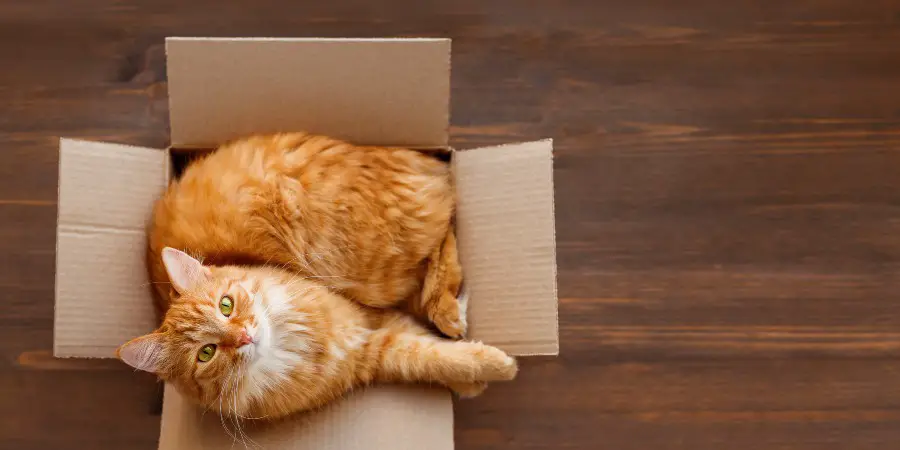Cats have been the most popular pet with modern families worldwide for many years. But despite their popularity, they do come with certain requirements, e.g., space.
Any pet parent thinking of getting a cat will need to consider its surroundings. Because as much as you may like to assume that they need lots of room, this can’t be further from the truth.
As many cat owners have come to learn, cats are more interested in the layout of your home, as opposed to how much space is available. For example, a typical domestic cat will require a minimum of 18 sq. feet.
Fortunately, this space is readily available even in the smallest of apartments. Pet parents who want to keep two or more pets will need additional room.
The amount of room available in your home shouldn’t worry you as much as its layout. Remember that cats like to hide and climb over things. A cat can quickly become stressed when it doesn’t have places to retreat to and enjoy some alone time.
On the other hand, having too much open space in a home will make it begin to feel vulnerable.
How Much Space Is Enough to Host a Cat?
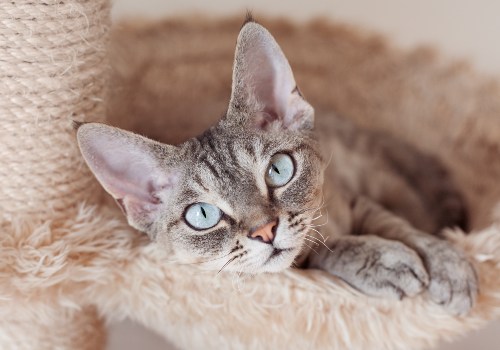
Unfortunately, this is one question that doesn’t have a straight answer. Every cat will have unique needs. For example:
- It’s not enough to have a big, spacious room when dealing with big cats such as the Maine Coon Cat, Norwegian Wood Cat, or the Siberian Cat.
- The opposite applies to small cat breeds, e.g., the Munchkin and the Singapura.
Nevertheless, the American Society for the Prevention of Cruelty to Animals (ASPCA) recommends that all cats have at least 18 sq. feet regardless of their size. That’s the amount of space they need to lead a comfortable life while under your care.
You can expect this number to continue increasing as the number of cats under your care increases. Please note that this number doesn’t hold in all cases. However, you can use it to guide you when determining what your pet needs.
Use it as a benchmark and ensure you stick to it.
Do Cats Like Living in Homes with an Open Setting?
The amount of available space is the first thing a person checks when looking for a new home. Therefore, it should come as a surprise to note that cats don’t necessarily see things in the same light.
A cat is likely to become uncomfortable if it finds itself having to deal with an open and unpopulated living space. Cats, like other felines, prefer to live in hidden environments. Most don’t like to venture to areas that make them feel exposed.
According to Romper, a cat would feel more comfortable in a small and enclosed area. It explains their attraction to card boxes. Their instincts direct them to such areas as it reminds them of the womb — A place where no one can harm them!
Small, enclosed spaces have another advantage; they’re warmer all year round. It takes more time to heat an open and expansive room, especially during winter. Keep in mind that felines have desert-dwelling ancestors, which is why they have higher temperatures.
But then again, you shouldn’t take this to mean that the cats won’t like it in large homes. All a pet parent has to do is ensure that they meet their pets’ needs, in the same way, they would do in smaller homes.
Large open spaces call for more hiding areas and some elevated spaces.
Is It Possible for a Cat to Live Comfortably in a Small House?

Cats can comfortably lead a happy life in small houses, e.g., apartments. It’s common for cats to preserve their energy for use in making short, well-timed bursts. Energy reservation is intuitive for them, as they like to hunt.
Energy preservation guarantees that they have enough vigor to stalk prey.
Additionally, cats like enclosed spaces as they offer them safety and contentment. A small home has many hiding spaces, e.g., behind furniture and in cupboards. Pet parents living in small homes should ensure the communal spaces have at least 18 sq. feet to offer.
At this point, you should note that this space requirement mentioned here mainly applies to cats used to living inside the house. Cats that have lived outdoors for most of their lives may resort to destructive behavior if they’re locked indoors for long.
Pet parents that want to keep multiple cats will have no option but to consider the available space. The ASPCA recommends that cat owners use the following formula when attempting to break down the space requirements:
- Measure the length of the apartment in feet
- Measure the width of the apartment in feet
- Multiply the two numbers. Take the result and divide it by 18
- After dividing, the result you’ll get will let you know the number of cats you can keep in the apartment.
For example, if the length is 5 feet and the width 5 feet, it means you can comfortably house 1 cat. But don’t forget to account for the apartment layout. Another factor that may influence this number is the temperament of your cat(s).
Should I Consider Getting Spare Room for My Cat?
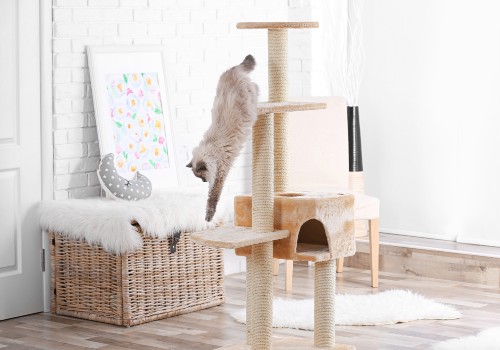
While you don’t necessarily need to get a spare room, it may be a good idea to have some extra room for the cat. Here’s the reason:
- The cat can claim the extra room as its own. It’s a move that can assist in keeping its territorial instincts under control.
- You can put its litter box in this room
- You can feed it in this room. Some cats like privacy when feeding. Ensure that the food bowl is far from its water bowl.
- The cat will have room to retreat to in case it feels overwhelmed
- You can turn the spare room into a cat gym. All you have to do is fill it with exercise equipment and other toys to help keep it entertained.
Does My Cat Need Some Outdoor Space?
If your cat had become accustomed to living outside, it would probably prefer to continue living outdoors. The same holds for indoor cats. According to PETA, pet parents should keep their cats indoors.
Parents who adopt outdoor cats can offer the yard as a compromise.
The space available outdoors provides the cat with enough space to exercise. It guarantees that it has a place to pursue prey, climb, jump, and run. If it doesn’t feel like doing all this, it can use this space for sunbathing and relaxing.
There are very few animals that love the sun as much as cats do.
It’s advisable to have an outdoor area when you have several cats living in a small apartment or home. A feline will need a place to escape to whenever it comes under stress. Outdoor spaces can assist in encouraging independence among timid pets.
Which Cat Breeds Should You Get When You Have a Small Home?
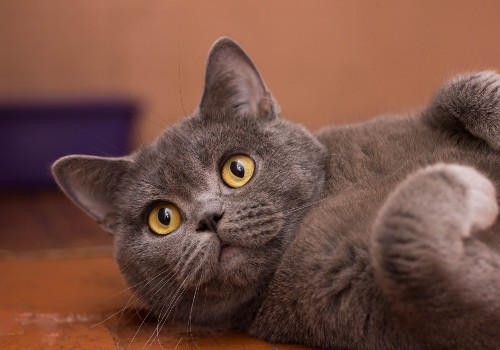
If you don’t have too much space in your home, the best option is to look for cat species that can survive in limited spaces without an issue. For example, if you bring home an affectionate lap cat, the cat will want to stay close to you at all times.
Provided it remains curled up in your lap, it won’t have time to notice the lack of space in the home. Excellent examples of cats that can thrive in small-roomed apartments include:
- Burmese
- Ragdoll
- Birman
- Species known to be indifferent to the available space include:
- American Shorthair
- British Shorthair
These breeds are highly adaptable, quiet, non-shedding, and independent. They can live in a small house or apartment without any fuss.
Most pet parents prefer to place their pet toys and beds in the same room as them. There’s no problem with doing so as it assists in creating a pet-parent relationship. You’ll need to develop this relationship with the pet from the moment you adopt her.
However, it’s recommended that you dedicate a whole room to your cat.
Providing the pet with a room of its own will make it feel like it owns a kingdom. Conduct all cat-related activities in that room to allow it to develop a habit. Consider placing a litter tray in one of the corners to guide it on where it should go to relieve itself.
Alternatively, you may want to consider creating a feeding schedule, playtime schedule, and feathering schedule. A private room ensures it has a place to hide when it becomes scared or worrying.
It’s the same room where you’ll place its toys.
Is It Possible to Tell When the Cat Has Become Derived of Space?
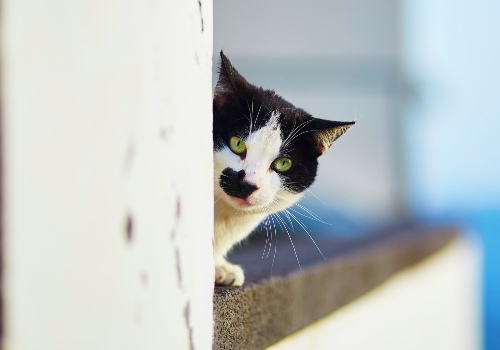
Pet parents have no option but to learn the body language of their cats. Cats aren’t as expressive as other pets. Be on the lookout for the following signs to know when the pet needs additional space:
- Running outside whenever you leave a window or door open
- Urinating or spraying outside its litter tray
- Destructive behavior, e.g., scratching furniture and anything else in its path
- Excessive scratching and grooming
- Always hiding under furniture and beds
What You Can Do to Make the Available Space Cat-Friendly
If your home doesn’t have enough room, there are a few things that you can do to make the pet more comfortable. Some of the steps you can use to enhance its quality of life include:
i. Increase the number of hiding places: Cupboards are great places to hide. Try to place numerous card boxes all over the apartment.
ii. Clean the house as often as possible: Cats like living in sanitary conditions. Make sure to clean your house whenever you have free time.
iii. Home setup: Change the furniture arrangement. Please place it so that it has several obstacles all over the house.
iv. Play with it twice a day: Playing with it will enable it to burn off the extra energy
Cats that are nervous and skittish tend to thrive in smaller spaces. The same may not apply to other breeds. Try to understand your cat’s preferences to allow you to tailor its surroundings in the best possible way.
How Much Indoor Space Does a Cat Need to Be Happy? (Video)
"In ancient times cats were worshipped as gods; they have not forgotten this."
-- Terry Pratchett

